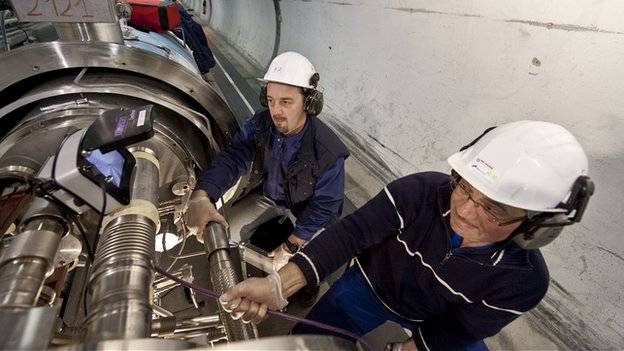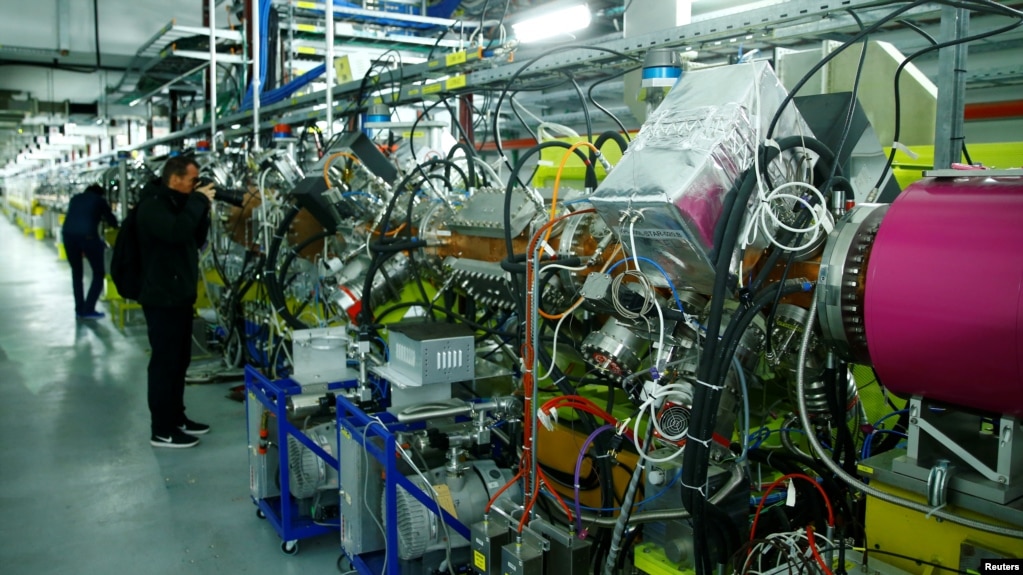“We are exploring truly fundamental issues, and that’s why this run is so exciting,” physicist Paris Sphicas told reporters at European physics lab CERN last week. “Who knows what we will find,” he said. Late last year, before CERN shut down its Large Hadron Collider (LHC) for a technical break, two separate teams of scientists said they had discovered anomalies that could possibly hint at the existence of a mysterious new particle. The discovery of a new particle could prove the existence of extra space-time dimensions, or explain the enigma of dark matter, scientists say.
The LHC, housed in a 27km tunnel straddling the French-Swiss border, has shaken up physics before. In 2012 it was used to prove the existence of the Higgs boson — the long-sought maker of mass — by crashing high-energy proton beams at velocities near the speed of light. A year later, two of the scientists who had in 1964 theorized the existence of the Higgs, also known as the God particle, earned the Nobel physics prize for the discovery.
‘TOTALLY UNTHINKABLE’
The Higgs fits in with the so-called Standard Model — the mainstream theory of all the fundamental particles that make up matter and the forces that govern them. However, the anomalies, or “bumps,” seen in the data in December last year could indicate something completely new. Going beyond the Standard Model would “mean that there is yet another unbelievable idea out there. Something that is totally unthinkable,” Sphicas said. The LHC, he said, could unveil whole new dimensions, help explain dark matter and dark energy, of which we have no understanding, but which together make up 95 percent of the universe. The giant lab might also prove the exotic theory of supersymmetry (SUSY), which suggests the existence of a heavier “sibling” for every known particle in the universe.
The unexpected excess pair of photons spotted last year could be a larger cousin of the Higgs, according to one theory. “Who knows, maybe there’s a whole Higgs family out there,” Sphicas said. However, to determine whether the observed data “bump” is merely a statistical fluctuation or could actually be the first cracks in the Standard Model, much more data is needed. Scientists had been gearing up to resume experiments at the LHC last week, but the plans were delayed after a weasel wandered onto a high-voltage electrical transformer on Friday, causing a short-circuit. CERN said that experiments were now expected to get underway later this week. When the massive machine comes back online, it is expected to quickly pile up astounding amounts of data for scientists to pick through for clues.
VERY RARE PHENOMENA







